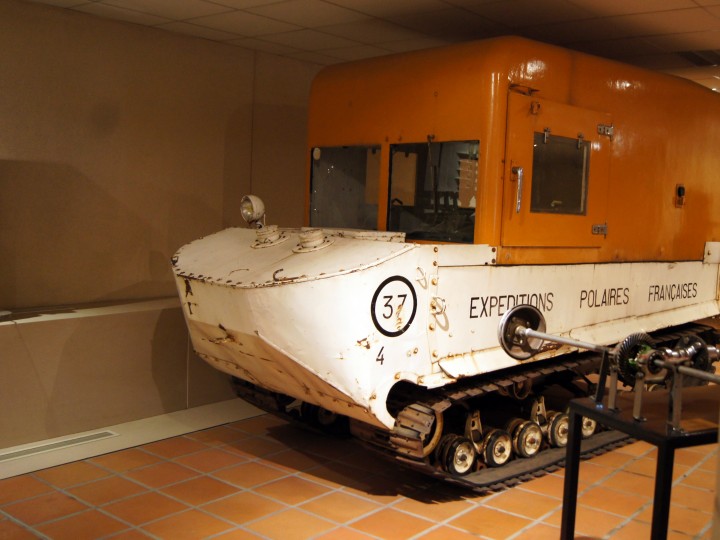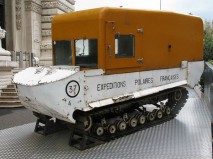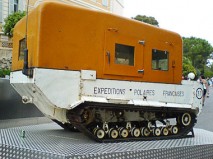1943 M29 Weasel EPF - Expeditions Polaires Francaises Snow Car No. 33
The idea for the Weasel came from the work of British inventor Geoffrey Pyke in support of his proposals to attack Axis forces and industrial installations in Norway. Pyke's plan to hamper the German atomic weapons development became Project Plough for which he proposed a fast light mechanised device that would transport small groups of commando troops of the 1st Special Service Force across snow. In active service in Europe, Weasels were used to supply frontline troops over difficult ground when wheeled vehicles were immobilised.
The first 2,103 vehicles had 15 in (380 mm) tracks, a later version had 20 in (510 mm) tracks. The M29 was amphibious, but with a very low freeboard; the M29C Water Weasel was the amphibious version, with buoyancy cells in the bow and stern as well as twin rudders.
Evidence exists for M29s being brought to the Meiringen railway station in November 1946, to support the U.S. Army's attempt to rescue the twelve individuals from the scene of the 1946 C-53 Skytrooper crash on the Gauli Glacier. The Weasels were planned to be used for a ground rescue, climbing up the Gauli Glacier. A pair of Swiss Flugwaffe-flown Fieseler Storch STOL aircraft were able to effect the rescue solely by air, before the Weasels were needed.













